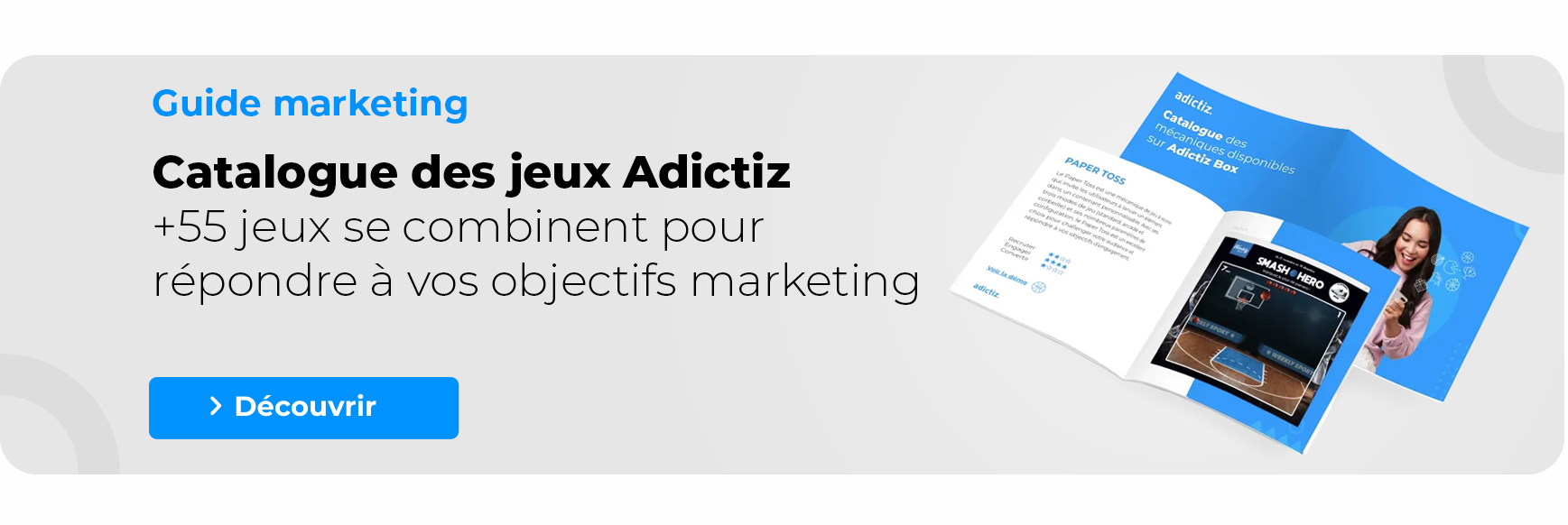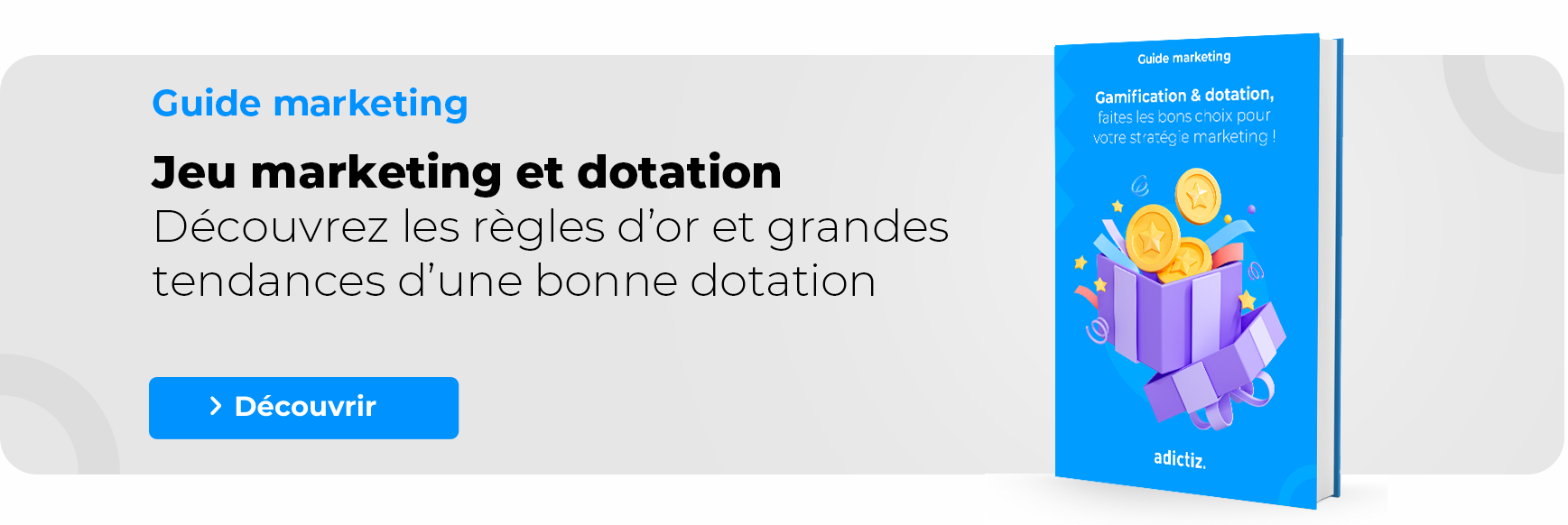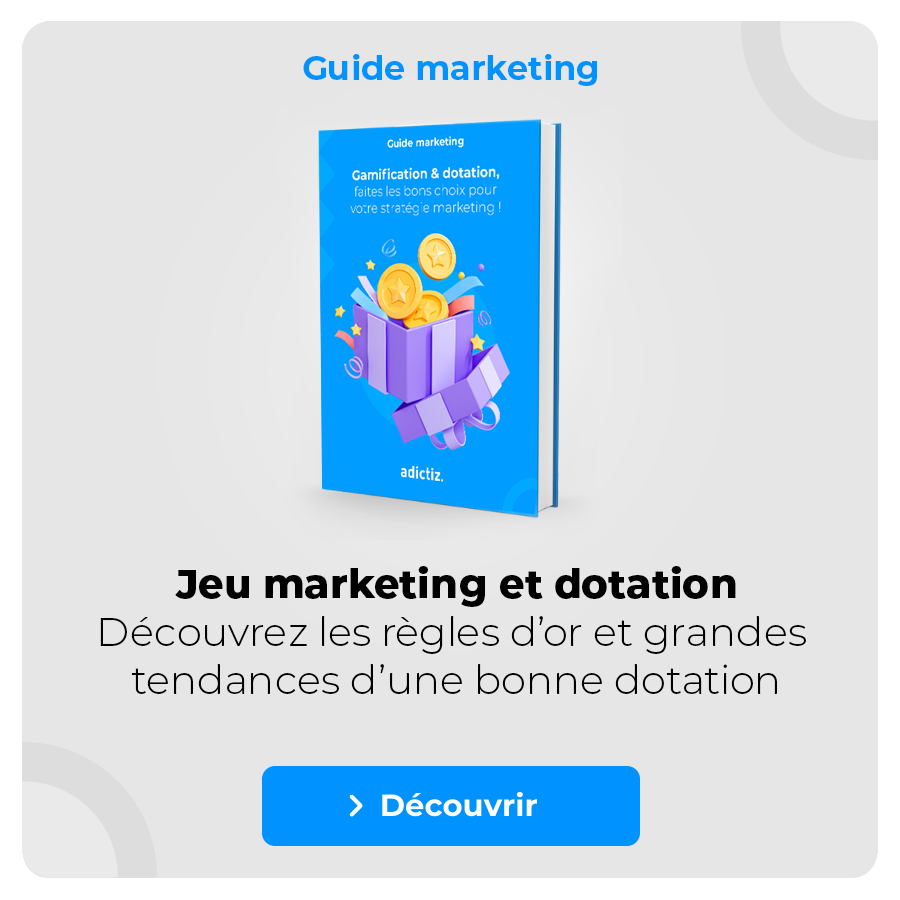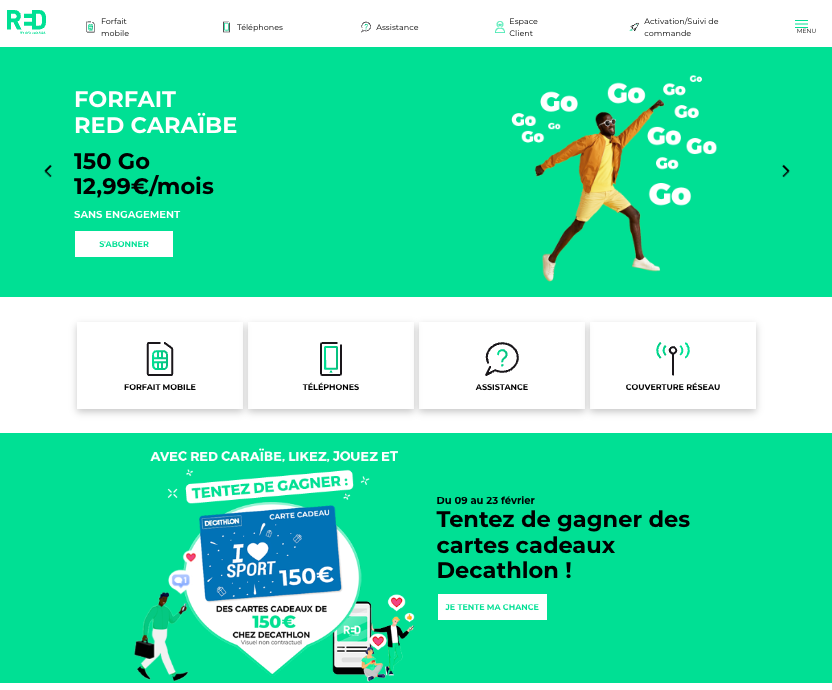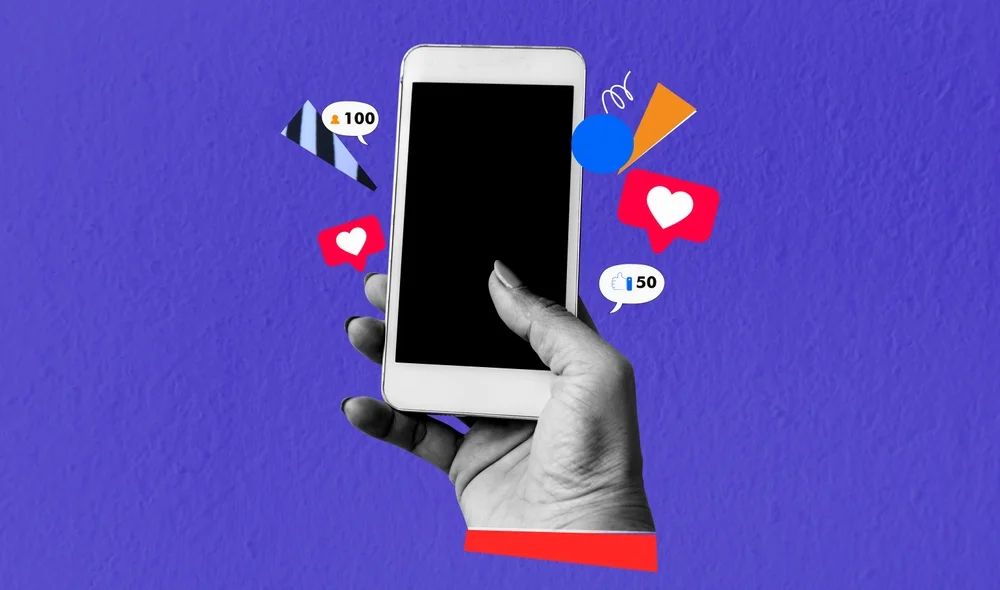
Top 4 ideas for workplace competitions
Organize workplace competitions is an excellent way to engage employees and strengthen team cohesion. The fun, interactive aspect of these animations can also be used to serve other strategic HR objectives, such as improving the employer brand, helping employees to develop their skills or retaining talent.
Depending on the expected results, but also on the specifics of the workforce (who may be working face-to-face or remotely), the corporate competition can take different forms.
In this article, you’ll discover 4 ideas of workplace competitions adapted to the professional world.
1. Use edutainment to help your employees develop their skills
Edutainment is the concept of combining learning and play. Introducing gamification mechanics into a professional training course or awareness-raising workshop not only increases participants’ attention, but also encourages the retention of new information.
Competitions can be used to encourage employees to improve their skills. On the one hand, the fun dimension makes professional training more enjoyable for learners. But by introducing a points system or a ranking between participants, companies can also boost their teams’ motivation and push them to excel.
A quiz shared after a training session, for example, can be a very interesting edutainment format for ensuring that employees have assimilated the new knowledge they have been given.
But the competition can also take place directly during the training module via gamified mechanisms such as the 7 Errors Game, for example. As part of a marketing training course, participants might be asked to identify the elements that need to be changed in the visuals of an advertising campaign, for example.
2. Boost employee engagement with creative competitions
Today’s companies are facing many new HR challenges. Younger generations, for example, are known to be more volatile and stay with the same company for shorter periods. There is also growing talk of quiet quitting, i.e. the gradual disengagement of employees who no longer feel part of a collective.
To engage their employees, organizations can again rely on competitions. The key is to offer activities that encourage employees to get involved in strategy and the company’s future. A good idea might be to ask them to come up with a new product or service.
This is what Lidl has done with its voting competition. The aim of this corporate competition was to engage employees by asking them to create the brand’s next pizza, soon to be available in stores. The animation met with great interest from the teams, enabling Lidl to collect 21.6k votes throughout the campaign.
In addition to valuing the creativity and ideas of its employees, Lidl boosted their commitment through this competition by choosing attractive prizes. After a prize draw, participants could win kitchen appliances and accessories.
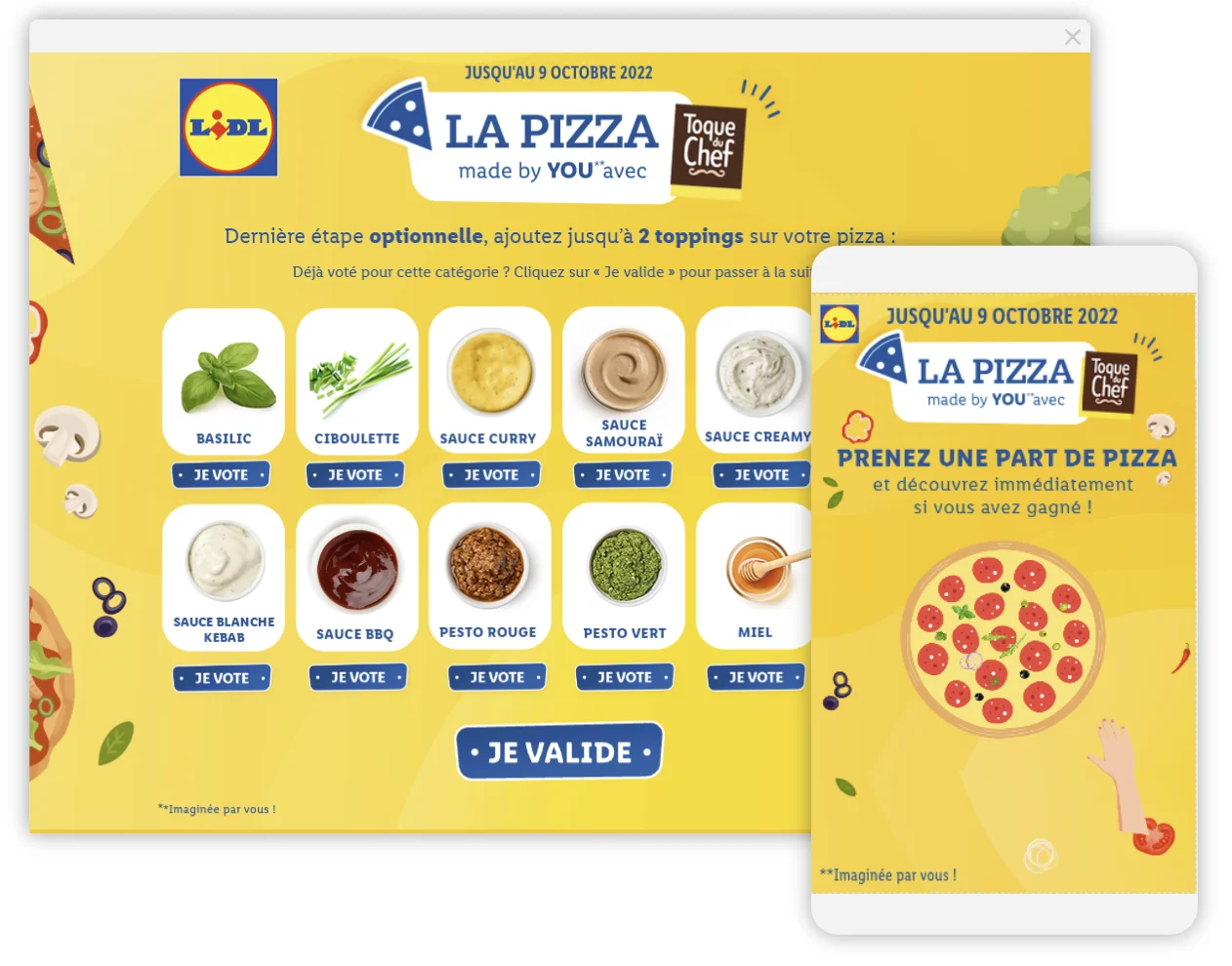
Similar workplace competitions can be set up to boost employee commitment. Customizers or gamified surveys can also be used to solicit feedback from teams and incorporate it into strategic decisions.
3. Strengthen team cohesion through fun activities
Within a company, organizing contests for groups can also encourage employees to work together. It’s a particularly good way of strengthening team cohesion and developing a spirit of camaraderie among colleagues.
Play is in fact a powerful lever for creating bonds, this can be a way for employees to get to know each other better, or to facilitate collaboration on joint projects. For example, the employer can encourage participants in an onboarding session to take part in a Personality Test. New recruits can break the ice by finding out which category of leader they belong to (via the famous 4-color test).
Sports competitions are also an excellent way of driving employee engagement. Employees can get together in teams and challenge each other in disciplines such as swimming, cycling or archery. A Prognostics challenge during a sporting event can also strengthen cohesion within the workforce by inviting employees to bet as a team.
The challenges of corporate social responsibility (CSR) are also particularly interesting for bonding staff and giving greater meaning to their mission. The competition can be used to raise funds (or items such as second-hand clothing) for needy people or charities. The teams that succeed in raising the funds will be rewarded with prizes that can be :
- material (gift, goodies, etc.)
- or symbolic (additional days off, promotion on the company website, etc.).
Adictiz took part in a QVT challenge. To find out more about the operation, read the dedicated article: Pimp Your Cup: Adictiz in-house game
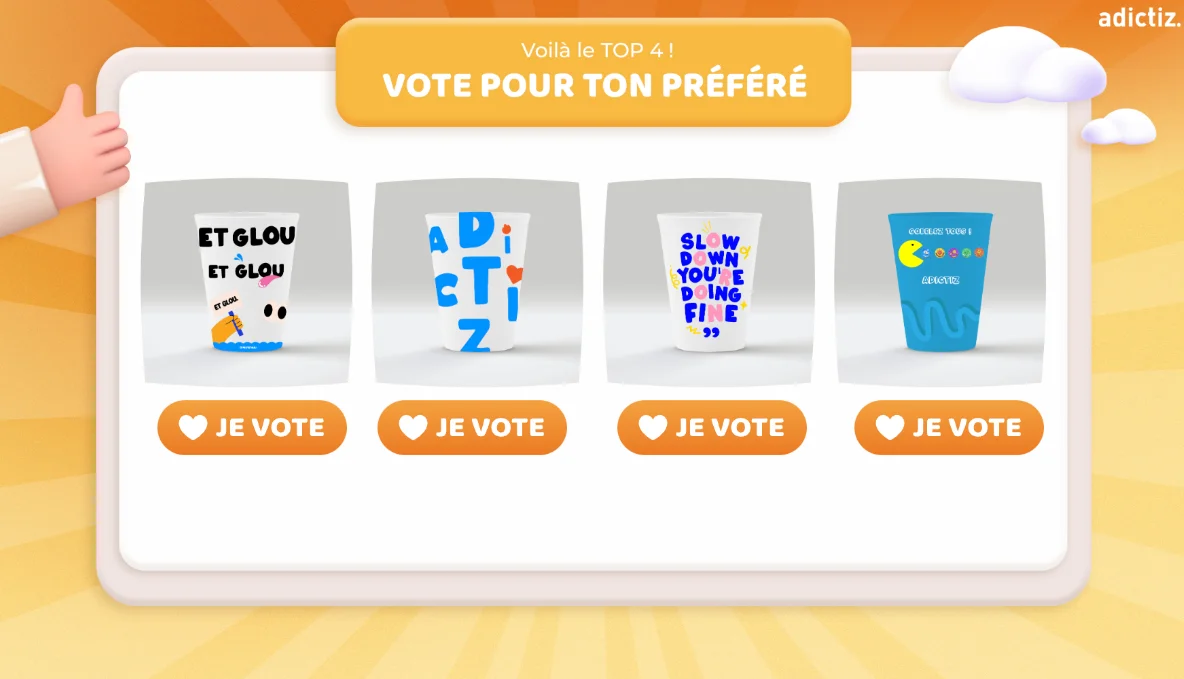
4. Loyalize and retain talent by rewarding them through workplace competitions
Workplace competitions can also be used to build talent loyalty. As already mentioned, organizations face a real challenge in retaining their employees. In fact, the departure of an employee entails :
- additional recruitment costs,
- a vacancy for a shorter or longer period,
- loss of expertise,
- but also lower productivity.
To retain talent within their teams, employers can organize a competition aimed precisely at rewarding employee loyalty. This type of event can be reserved for senior profiles or, on the contrary, for new recruits whose first months with the company are crucial to their long-term integration.
But the company can also take advantage of special occasions to reward all its employees. DPD, for example, capitalizes on seasonal events such as its 25th anniversary to unite its teams around an internal competition. The organization relied on a simple mechanic (Match 3) to spoil their employees. Participants could win attractive prizes (travel boxes). The result: DPD recorded an average of 41 games per player.
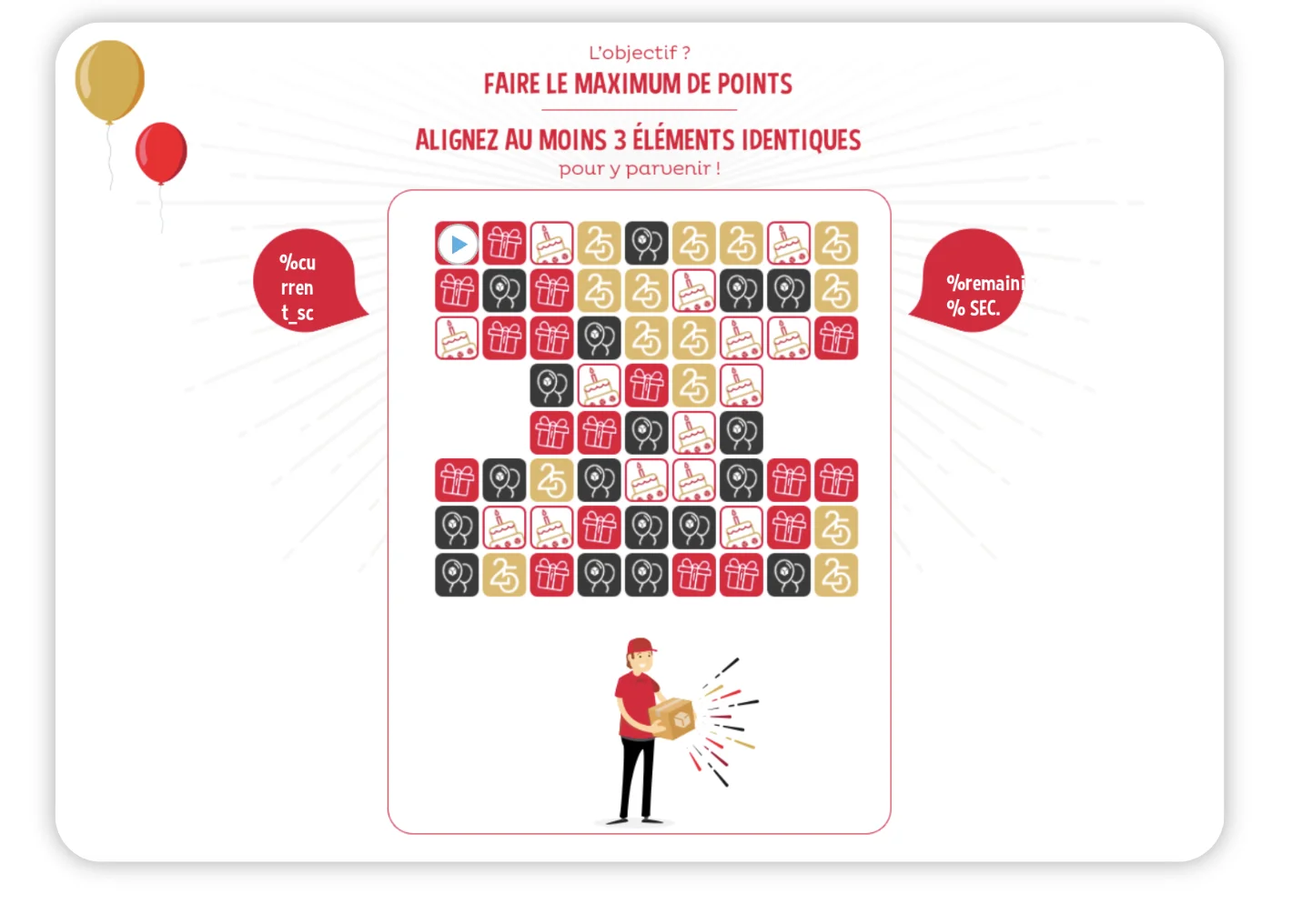
Companies can also reinforce their employer brand by organizing internal competitions such as Instant 100% win. All participants can win prizes, demonstrating the company’s commitment to the well-being and satisfaction of its teams.
Conclusion
Organizing a corporate competition is an excellent way to attract, engage and retain employees. Start by defining the objective you want to achieve, so you can choose the most appropriate event idea. Discover all our customizable interactive mechanics and strengthen your employer brand!



